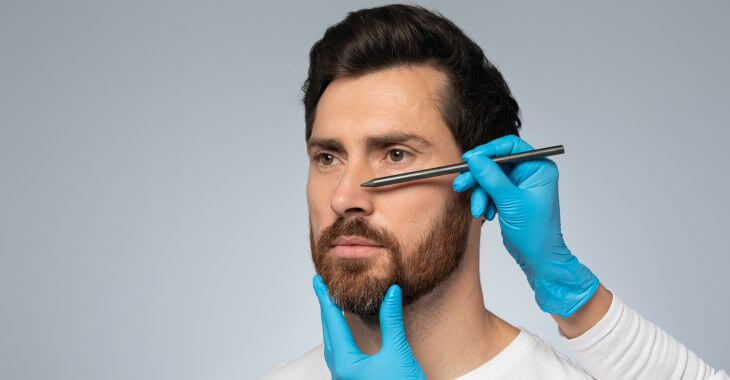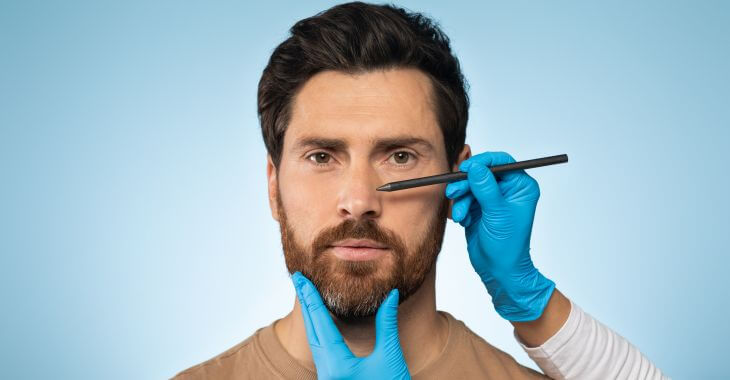Understanding Rhinoplasty: A Guide to Nose Reshaping

Rhinoplasty, commonly known as a nose job, is one of the most popular cosmetic surgeries worldwide. It reshapes or refines the nose to improve both function and appearance, offering patients greater confidence and harmony with their facial features.
What Is Rhinoplasty?
Rhinoplasty is a surgical procedure that changes the structure of the nose. It can address aesthetic concerns, such as the nose’s shape, size, or angle, as well as breathing issues caused by a deviated septum or previous trauma.
Reasons People Choose Rhinoplasty
Individuals pursue rhinoplasty for many reasons—some cosmetic, others medical. While some want to correct genetic asymmetry or a prominent hump, others seek relief from chronic nasal obstruction or post-injury deformities.
Common motivations include:
- Improving facial balance or profile symmetry
- Reducing the nasal bridge or width
- Refining the nasal tip for a more natural shape
- Correcting breathing difficulties or structural issues
- Repairing damage after an accident or injury
The Consultation Process
A personalized consultation is the first step in any rhinoplasty journey. The surgeon evaluates your facial proportions, medical history, and nasal anatomy. Advanced imaging or 3D simulation may be used to preview potential results.
Open communication is essential—patients should discuss expectations, previous surgeries, and desired outcomes to help the surgeon create a tailored plan.
Open vs Closed Approach in Rhinoplasty
The open vs closed approach refers to the two primary surgical techniques used in rhinoplasty. The difference lies in how the surgeon accesses the nasal structure.
- Open Rhinoplasty: Involves a small incision across the columella (the tissue between the nostrils). This provides full visibility of nasal anatomy, ideal for complex corrections and reshaping.
- Closed Rhinoplasty: All incisions are made inside the nostrils, leaving no external scar. This approach is less invasive, with reduced swelling and quicker healing time.
Choosing between the open vs closed approach depends on several factors—such as nasal anatomy, aesthetic goals, and whether structural reconstruction is required.
Dorsal Hump Reduction Steps
One of the most common requests during rhinoplasty is dorsal hump reduction—the smoothing of a visible bump along the nasal bridge. The dorsal hump reduction steps require precision and balance to maintain the natural contours of the face.
Typical steps include:
- Evaluation: The surgeon assesses cartilage and bone that form the nasal hump.
- Exposure: The hump is accessed using either the open or closed technique.
- Reduction: Excess bone and cartilage are carefully shaved or trimmed.
- Reshaping: The bridge is refined and smoothed for a balanced appearance.
- Support Restoration: The nasal bones are repositioned to prevent collapse.
A skilled surgeon ensures that dorsal hump reduction steps maintain harmony with the rest of the nose, avoiding an overdone or unnatural look.
Functional and Aesthetic Balance
Rhinoplasty isn’t just about appearance—it’s also about preserving or enhancing nasal function. Surgeons often perform septoplasty during the same procedure to correct breathing obstructions caused by a deviated septum.
The goal is to achieve both a beautiful and functional outcome—so that you not only look better but also breathe better.
Recovery and Healing
Recovery times vary based on the surgical method and complexity of the procedure. Most patients experience mild swelling and bruising that improves within 1–2 weeks.
General recovery guidelines:
- Use cold compresses to minimize swelling
- Keep your head elevated when sleeping
- Avoid heavy lifting and strenuous exercise for several weeks
- Attend all follow-up visits to monitor healing
By three to six months, most swelling subsides, revealing a refined nasal shape. Final results can take up to a year as tissues fully settle.
Risks and Considerations
Rhinoplasty is a safe and effective procedure when performed by an experienced surgeon, but like any surgery, it carries risks. These can include infection, asymmetry, or unsatisfactory results. Choosing a board-certified facial plastic surgeon significantly minimizes these risks.
Patients should also avoid smoking before and after surgery, as nicotine impairs circulation and healing.
Non-Surgical Rhinoplasty
For individuals seeking subtle improvements without surgery, non-surgical rhinoplasty using dermal fillers can smooth minor bumps, improve symmetry, or lift the nasal tip temporarily.
While results last 9–12 months, this option provides an excellent preview for those considering surgical rhinoplasty in the future.
The Importance of Choosing the Right Surgeon
Rhinoplasty is one of the most technically challenging cosmetic surgeries. Selecting a surgeon who specializes in facial procedures ensures expertise in both aesthetics and function.
An experienced specialist can determine whether an open vs closed approach best suits your needs and perform delicate dorsal hump reduction steps with precision.
When choosing a provider, look for:
- Board certification in facial plastic surgery or otolaryngology
- Proven before-and-after photo results
- A clear communication style and personalized care plan
- Expected Results
Modern rhinoplasty techniques deliver natural-looking results that complement your unique features. Patients typically enjoy improved facial harmony, better confidence, and in many cases, enhanced breathing.
Results are long-lasting and can improve self-image for years to come when performed by a skilled surgeon.
Maintaining Your Results
Protecting your nose during recovery is key. Avoid any activity that could cause trauma and maintain good skin health to keep your results looking refined.
Follow-up visits ensure that your healing progresses as expected, and your surgeon can address any minor irregularities if needed.

The Confidence of a New Profile
Rhinoplasty offers far more than aesthetic enhancement—it’s an opportunity to restore balance, confidence, and comfort. Whether you seek subtle refinement or significant change, this transformative procedure can redefine how you see yourself.
By understanding techniques like the open vs closed approach and the precision behind dorsal hump reduction steps, you’ll feel confident making informed decisions about your care.
The information provided on this website, including text, graphics, images, and other materials, is intended solely for informational purposes and should not be used as a substitute for professional medical advice, diagnosis, or treatment.




)